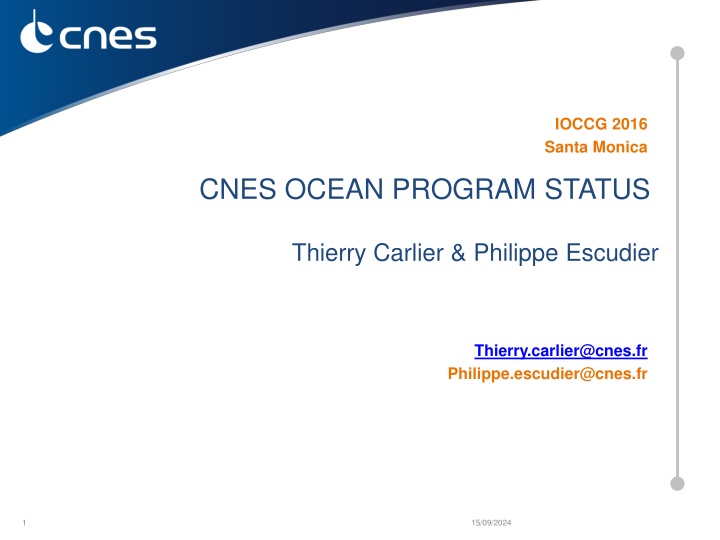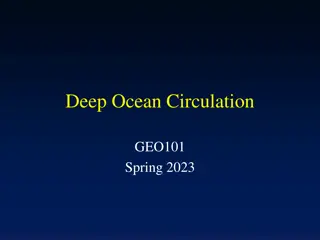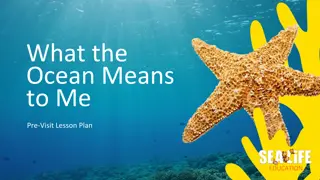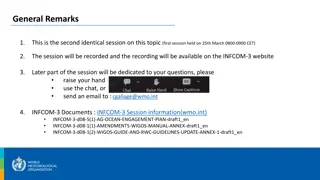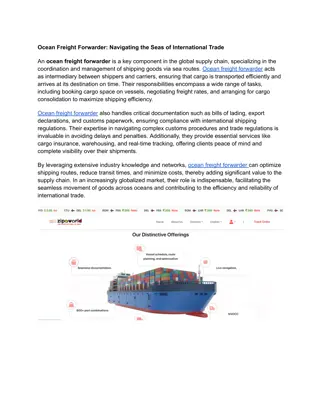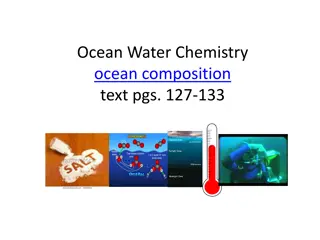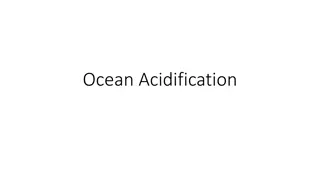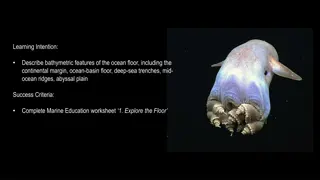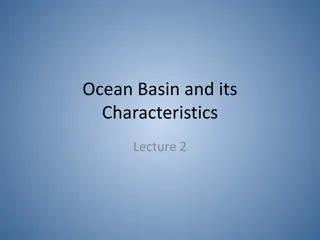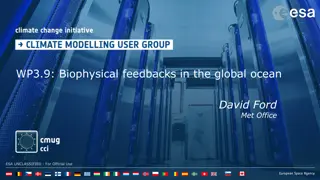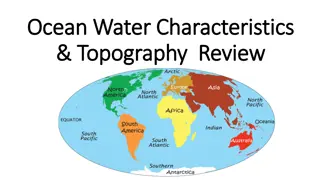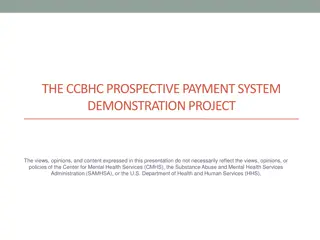CNES Ocean Program Overview & Prospective Science Initiatives
CNES Ocean Program has achieved significant milestones including successful launches, programmatic decisions, and future mission preparations. Prospective science initiatives aim to enhance space and time resolution for ocean monitoring, addressing societal needs and improving data collection systems.
Download Presentation

Please find below an Image/Link to download the presentation.
The content on the website is provided AS IS for your information and personal use only. It may not be sold, licensed, or shared on other websites without obtaining consent from the author.If you encounter any issues during the download, it is possible that the publisher has removed the file from their server.
You are allowed to download the files provided on this website for personal or commercial use, subject to the condition that they are used lawfully. All files are the property of their respective owners.
The content on the website is provided AS IS for your information and personal use only. It may not be sold, licensed, or shared on other websites without obtaining consent from the author.
E N D
Presentation Transcript
IOCCG 2016 Santa Monica CNES OCEAN PROGRAM STATUS Thierry Carlier & Philippe Escudier Thierry.carlier@cnes.fr Philippe.escudier@cnes.fr 1 15/09/2024
CNES Ocean program major events since previous IOCCG Launches : Jason 3 successful launch, January 17th, 2016 In orbit verification on going CNES conducts operation till LEOP end Sentinel 3 A successful launch, Feb 16th, 2016 On going instruments set up and verification CNES supports Calval : altimetry + Ocean Color (OLCI) Programmatic decisions : Saral/Altika mission extension (2 years) : Feb 2016 SWOT phase C/D decision : mid 2016 CFOSAT : system CDR end 2016 New programs : OCAPI proposal for ESA EE9 AO COSPACE prospective Science support SWOT Science Team selected for the 2016 2020 timeframe Continuous support of science activities related to our space activities through Tosca AO Calval activities : ie Boussole or Coriolis program (Argo, Bio Argo, marine mammals ) Future missions preparation Missions Valorization 2
CNES Ocean program Prospective Science prospective seminar organized in La Rochelle, 2014, COSPACE (Government-Industry Consultation Committee for Space activity) has set up a group to make recommendations for short/medium/long term decisions concerning space programs applied to ocean. Work on going, final report being reviewed. Main outcomes : First generation of measurements systems proved the value of space observations for ocean monitoring and management : Physics of the ocean : altimetry, SST, sea state, surface current Bio geochemistry : ocean color, salinity, operational monitoring systems now in place, benefiting from these techniques : Ocean analysis and forecast centers, Copernicus program in Europe : long term commitment, global coverage with high revisit time, multi-parameters, open and free data policy, New challenges to be met to answer societal needs : Integrated view : Dynamics and biology Air - Sea interaction Continent - Sea interactions, costal areas For that a major technical challenge is improvement in space and time resolution, main goals : Improvement by a factor of ten of altimetry space and time resolution capacity Improvement by a factor of ten of ocean color time resolution, Geostationary observations to complement LEOs 3
OCAPI Programmatic Context CNES Science Prospective Seminar in 2014 confirmed OCAPI as a short term priority for Earth Observation Program Decision in spring 2015 to start complementary studies with the objective to take opportunity of proposal submission to the ESA Earth Explorer 9 program Call for Proposals for the Earth Explorer Mission EE-9 released in November 2015 Letters of Intent to be sent to ESAby Feb, 1st Proposal submission due for the 24thof June 2016 Selection : End of 2016 (up to 3 proposals selected for phase Astudies) Final selection : Likely mid of 2018 Launch timeframe : 2024 An OCAPI Proposal managed by David Antoine (Laboratoire d'Oc anographie de Villefranche (LOV)) with support of a Science team (Experts from Europe) & CNES technical Experts is under preparation. OCAPI Letter of Intent sent to ESA First science team coordination meeting held in Paris on the 5thof February CNES industry Study to assess the mission feasibility 4
OCAPI CNES Study On Going Activities Two competitive contracts are currently running with French companies : Airbus Defence & Space (ADS) and Thal sAlenia Space (TAS) Trade-off between mission requirements and instrument concept Feasibility analysis for the accommodation of the instrument onboard commercial Host Platform Development plan elaboration and CaC assessment including host fees To be completed by midApril 2016 GOCI-1 & GOCI-2 programs led byAirbus D&S for KARI (South Korea) Sentinel-3 OLCI program led by TAS for ESA 5
OCAPI CNES study main results Instrument concept compatible with the main mission requirements : 1 hour revisit and overall disk imaging (Ocean and costal areas) 250 m spatial sampling @ Nadir 13 bands from 412 to 1020nm, with filter wheel for bands selection, New SNR requirements and MTF =0,15 Instrument compatible with telecommunication host satellite (150kg, 250W) thanks to specific adaptations : Need of isolators beneath the instrument to filter the high frequency perturbations Need of images processing or line of sight compensation 6
Potential Flight opportunities Analysis for an Ocapi like hosted payload Assumptions : Orbital slot : +/- 15 Launch window 2023-2025 Telecom commercial satellite on geostationary orbit up to 3 per year identified potential telecommunication S/L 7
International collaboration for global geostationary Ocean Color measurement To get global coverage from geostationary orbit an international collaboration should be implemented : Minimum of 3 satellites required positioned at coordinated locations similar to atmospheric observations from geo orbit To allow global science and societal applications, a common set of missions definition elements is a key asset Spectral Bands definition, Calval Data access IOCCG role and support to be discussed : Overall recommendation for such a virtual constellation Specific support to individual initiatives : Geocapi, Geoape, GOCI II Building on previous group reports to promote key mission definition elements 8
Thank you ! S2 image over the Baltic
